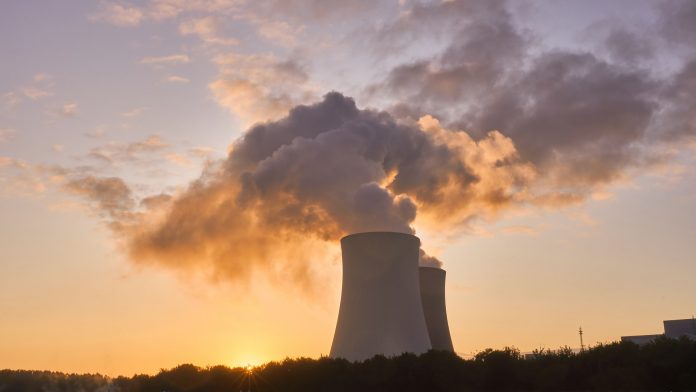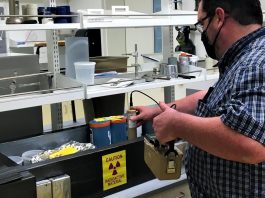Gary Bradshaw, Director of nuclear plant safety specialist Omniflex, discusses how new plant-wide safety critical systems improve operator response times and event analysis capabilities.
No industrial sector is as highly regulated as the nuclear industry, and there is none where mission-critical safety systems matter more. Plant-wide safety critical systems include plant control systems, radiological monitors and critical alarms, which must meet IEC 61508 safety integrity levels (SIL).
In this article, Bradshaw shares an overview of safety systems in the nuclear industry and discusses some of the systems that improve safety in nuclear facilities.
The dangers of nuclear plant accidents highlight the need for safety critical systems
The nuclear sector is a low risk, high consequence industry. So, while there is minimal chance of an industrial accident occurring, when one does happen, it is disastrous.
To date, there have only been two nuclear plant accidents in history to be classified as a level seven event on the International Nuclear Event Scale (INES). These were the Chernobyl disaster and the Fukushima Daiichi accident, which saw roughly 500,000 people evacuated between them.
While these are the only major nuclear accidents to have occurred in over 19,000 cumulative reactor years of commercial nuclear power operation globally, images of the exposed reactor of the Fukushima Daiichi plant raging out of control still haunt the minds of many.
A decade on, safety remains at the forefront of the agenda for the nuclear industry and all new plant-wide safety systems and protocols for the sector are developed with that in mind.
For example, the Enhanced Methodologies for Advanced Nuclear System Safety (EMEANSS) project aims to reduce the risks associated with developing new nuclear energy technologies.
The four-year project brings together scientists from across the UK and India and is led by Dr Simon Middleburgh from Bangor University’s Nuclear Futures Institute. It will use experimental data and machine learning to develop sophisticated safety critical systems and models across key areas, such as new fuels for nuclear power generation.
By modelling the performance of new fuels, the scientists hope to improve operational efficiency and plant-wide safety. Nuclear fuels operate in some of the most extreme conditions and predicting their behaviour as they are used in the reactor is important to ensure they remain within their safe operating parameters.
While research projects like EMEANSS will undoubtedly play a key part in the evolution of plant safety in the nuclear industry, the sector remains highly regulated, and engineers are often hesitant to adopt new technologies. For example, many plant managers are reluctant to adopt commercial off-the-shelf COTS products, even though they offer some key advantages.
The nuclear industry is a highly regulated environment
Every UK-based nuclear facility must follow strict regulations for the radiological protection systems used to monitor the levels of alpha, beta and gamma radiation in the environment.
These regulations are set by the Health and Safety Executive (HSE), the Office of Nuclear Regulators (ONR) and the Nuclear Decommissioning Authority (NDA). They are designed to avoid the likelihood of accidents and minimise the major human consequences when they occur.
IEC 61508 SIL ratings are crucial for this as they help plant managers identify plant-wide safety critical systems that should function with or without a human operator.
The IEC 61508 standards define four SILs, with SIL-1 being the least strict and SIL-4 being the most strict. Any system rated SIL-2 or higher must be able to act without an operator. Safety critical systems like local alarm annunciators requiring operators to acknowledge abnormal status alerts and take action can only be SIL-1 at best.
However, nuclear facility control systems must act automatically without operator actions and must be at least SIL-2 certified.
For example, even if operators miss a high-level alarm, safety systems can automatically implement safety shutdown procedures regardless and avert disaster.
Networked radiological monitoring
Traditionally, nuclear facilities used non-networked wall-mounted radiation protection instruments to monitor alpha, beta and gamma levels.
If a high-level radiation alert or instrument failure occurred, the monitor would detect it and sound a local area alarm. However, to comply with the industry’s strict operational guidelines, networking of radiological protection systems became standard practice. The industry had to deal with extreme costs and disruption to install, network and test devices to achieve this.
This is because each plant-wide safety critical system was bespoke and required significant amounts of new cabling and a skilled wireman to install and test each individual part of the system. This work would take months to complete and validate, only to be repeated whenever maintenance or an instrument needed to move to a new facility area.
When the National Nuclear Laboratory (NNL) was tasked with installing 130 data collection points to connect large volumes of radiation protection instruments at Sellafield’s nuclear site, it was not feasible to use traditional methods. It would have taken months to complete and involved significant cabling and installation costs.
To overcome these challenges, Omniflex designed the RPN1 radiation monitor interface device in collaboration with Steve Parkin, senior project manager for NNL.
The RPN1 is a gateway device developed to simplify data collection from various radiation protection monitors via RS485 communications ports. It connects them to the plant’s SCADA system. It is a COTS product that can be installed in minutes, saves thousands of man hours of work and eliminates the need to run miles of expensive power cables to each monitor.
Furthermore, it is standardised to meet ISO 9001 quality levels, so there is no need for additional third-party inspections during installation or testing.
Installing the RPN1 across the Sellafield site helped NNL save over £1m in costs, ensured that the time spent by personnel in the active areas was greatly reduced, and accelerated the delivery and active service of the safety system. The units have since been used on other Sellafield site projects and are specified to be used on new projects planned over the next five years.
The technological developments of the RPN1 led to Omniflex winning the Nuclear Decommissioning Authority’s Innovation Award in 2016.
How can nuclear waste be stored safely?
The final area of nuclear site safety to highlight is the safe storage of nuclear waste. Different kinds of waste require different kinds of containers and different sets of key parameters that require monitoring.
However, regardless of type, all nuclear waste is extremely hazardous and must be treated cautiously. Sensors and any other electrical devices in waste storage locations must operate for decades in an extremely hazardous environment and include a power supply that works for decades without human intervention.
To improve its ability to monitor the condition of waste containers in long-term storage, Sellafield Ltd recently commissioned the Nuclear AMRC to develop new smart sensor technologies for waste monitoring. The project focused on developing new sensors to ensure the long-term safety of waste from the earliest years of the UK’s nuclear programme.
The new sensor safety system provides data on the condition of the waste over decades of storage. Sellafield Ltd produces thousands of nuclear waste containers each year, all requiring on-site storage. Throughout this storage period, Sellafield must demonstrate that the waste, the container and the store are evolving as expected with in situ monitoring over decades of storage.
If the nuclear industry is to prevent future high consequence accidents like Chernobyl and Fukushima Daiichi, it must continue to innovate and develop new plant-wide safety critical systems.










